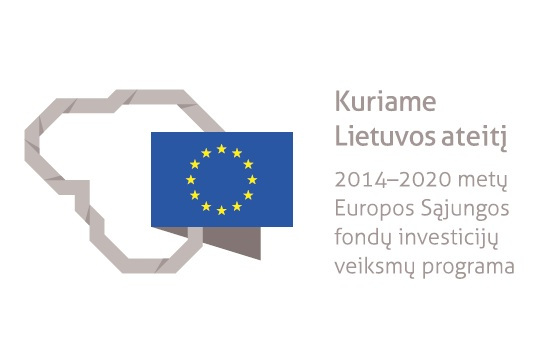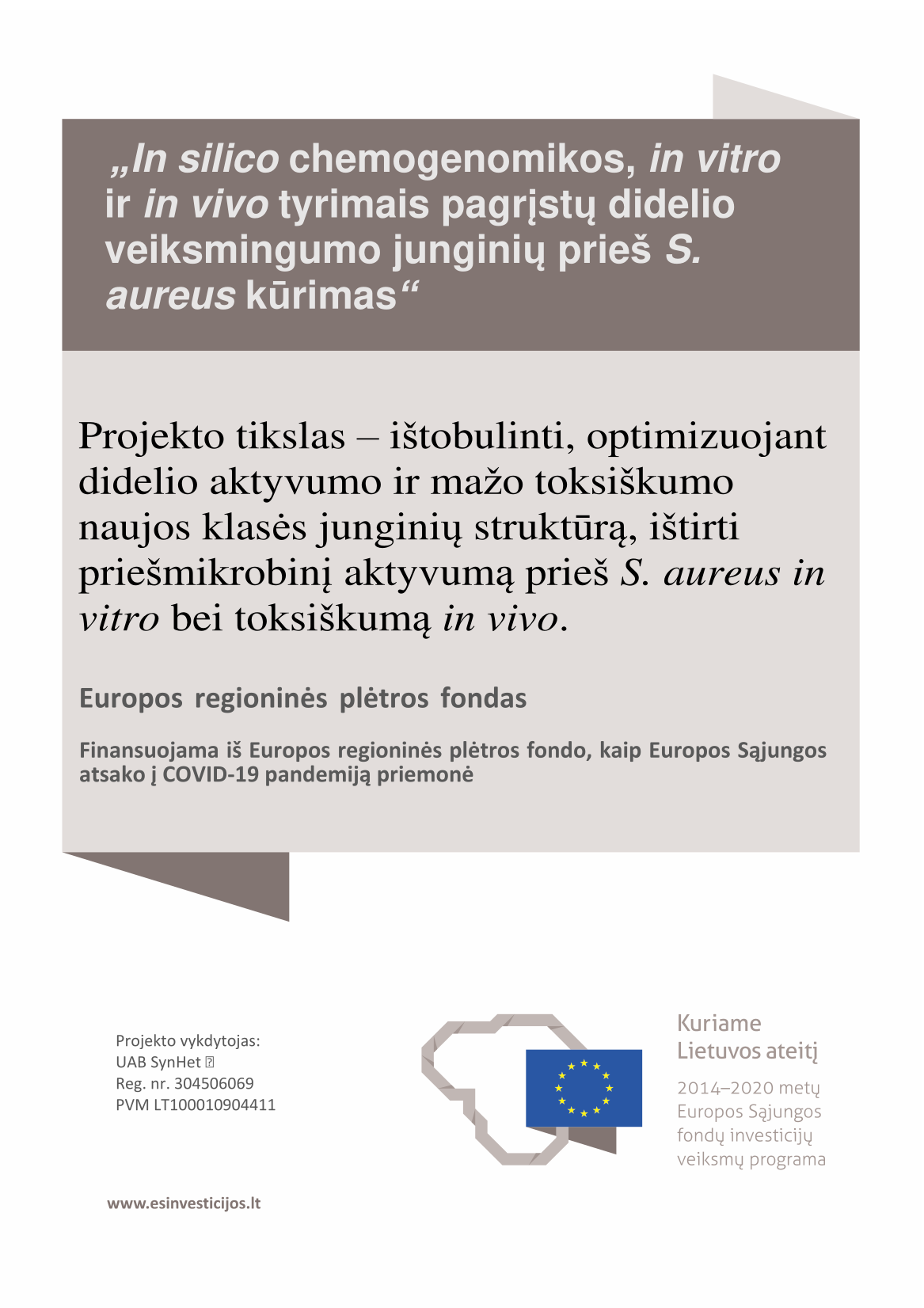EU grants

Lithuanian Business Support Agency (LVPA) supported project
"In silico chemogenomics driven design and synthesis of new in vivo and in vitro active antibacterials vs S. aureus"
Summary of the project
During the project, we aim to optimize the chemical structure of the most potent compounds in order to create a library of biological active compounds
1) higher antibacterial activity;
2) lower toxicity compared;
3) a lower probability of occurrence of resistance.
The aim of the project is to optimize the structure of compounds aiming to enhance activity and lower toxicity vs S. aureus.
During the project, R & D activities will be carried out, for the implementation of which an investment of 484,174.30 EUR is required.
During the project 6 R&D activities will be implemented:
1) Metabolic tests of S. aureus with tandem mass spectrometry (QTOF)
2) In silico optimization of the library with new more potent structures
3) Synthesis of in silico optimized library
4) Antibacterial activity tests against S. aureus
5) In vitro studies on bio accumulation and toxicity-related activity
6) In vivo bio sensitivity and toxicological activity evaluation
Research methodology
The project is divided into two stages:
1) Research activities. In this stage metabolic profiling of treated and untreated S. aureus with most potent compounds will be performed. By profiling we aim to detect changes in the metabolic activity which will be measured by the QTOF spectrometer. The change in metabolic profiling will help to detect which metabolites are in excess leading to indirect identification of potential extracellular target (or target groups). The further in silico modeling will help to optimize current most active compounds by structural chemical space exploration (changing groups or rings), physicochemical (LogP, LogD, pKa, lipophilic/hydrophilic profiles), metabolic stability (introduction in the structure metabolic stable groups like fluorine, trifluoromethyl, deuterium, etc.) of the compounds derived from the scientific literature. The in silico studies will be performed with computational program packages. The synthesis of in silico optimized members will be performed by using the parallel synthesis concept. By applying such concept, a multiple structure library will be synthesized. Furthermore, by transforming the functional groups it is possible to achieve the functional diversity. The synthesis of the optimized library will be performed by using classical or specific (microwave, ultrasound) organic synthetic strategies. Finally, research activities will be accomplished by performing antibacterials evaluation of synthetic compounds. MIC, MBC and biofilm activities will be measured.
2) Development. In this stage bio profiling activities will be performed. Mainly the human skin 3D infection model in order to evaluate effect of new antibacterials. Those experiments also will evaluate the bioavailability proliferation, metabolic activity, mitochondrial functionality, free radical production, and toxicity. In order to evaluate the safety of new synthetic compounds in vivo LD50 toxicity of most potent derivatives will be performed. The mouse will be injected or fed with an excess of new most potent compounds above therapeutic dose to evaluate toxic affect and effect to organ or organ systems. Furthermore, histological preparations will be evaluated in order to determine the biological effect of toxic doses of most potent compounds.

